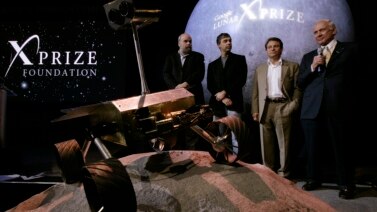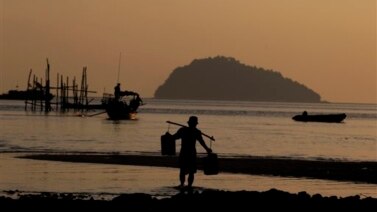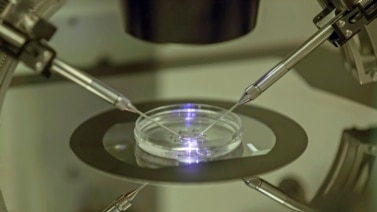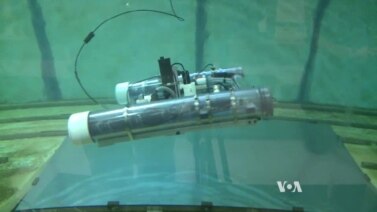Scientists from the United States say they have found fish and other aquatic creatures living under icy waters in Antarctica. They made the announcement after completing three months of research at the Ross Ice Shelf, the world’s largest floating ice sheet.
The researchers hoped to find clues to explain the force of the melting ice and its effect on sea level rise.
Antarctica is the driest, coldest and windiest place on Earth. Reed Scherer and Ross Powell are with Northern Illinois University in DeKalb, Illinois. They just finished up their research on our southernmost continent. Money for the project came from America’s National Science Foundation.
Professors Scherer and Powell describe their scientific investigation.
“The central focus of the research was to try to get some actual physical constraints on what the ice sheet looks like over time and what it is doing right now.”
“And so we chose a study site where, in the first year, we went into the subglacial lake and tried to understand the environment in there, both ecologically and in terms of the ice dynamics about how the lake operates, and how the sediment underneath the ice sheet operates, as well, because it's the water and the sediment underneath the ice that controls how fast the ice is flowing into the ocean.”
Ross Powell led the investigation. The team included scientists, engineers, mechanics and technicians. They used tractors to pull electric generators, science laboratories, heavy machinery and other supplies across the ice.
The tractors moved everything from the main U.S. scientific base at McMurdo Station to the researcher’s camp – a distance of 1,000 kilometers.
The camp was near a subglacial lake, where an earlier study took place. The researchers worked in an area called the grounding zone, where Antarctic ice, land and sea converge.
Ross Powell says the latest study may provide evidence that can help predict the effect of climate change on rising sea levels.
“What we have found is that these are very sensitive areas to the stability of how dynamic the ice is and how fast the ice may react to increases of melting both from the ocean and the atmosphere.”
Among the new instruments built for the project was a powerful hot water drill. The researchers used the drill to dig down some 740 meters. They collected water, sediment and other material from the grounding zone.
Working around the clock before the deep hole refroze, they sent a video camera down to the 400-square-meter undersea area.
Reed Scherer says the video images they saw in the Command Center were a total surprise.
“It's a very mobile environment. The bottom is changing constantly. And so the things that we saw were all very mobile organisms, things that swim and some things that crawl. And obviously they are getting enough nutrition that they can thrive. Some of the little crustacean-like creatures called amphipods that we saw swam quite quickly and were quite active.”
This is the farthest south that fish have ever been seen. How did the creatures get here? What do they feed on? And what effect will the retreating ice have on them?
Ross Powell says the ice and sediment cores taken from the grounding zone can offer clues.
“We know that the ice is melting there at the moment and so by opening up the cores once they get back, we hope to be able to understand what the ice was doing in the past, relative to what it is doing now. And because it is melting so fast or seems to be melting fast at the moment, we anticipate that there will be some differences that we’ll see in the history of the ice sheet from the sediment cores, once we open them up.”
Ross Powell says the work raises more questions than it answers. Together with other researchers, he is planning to ask for financial help to continue studies of the frozen continent.
I’m Marsha James.
VOA reporter Rosanne Skirble prepared this story. Marsha James wrote it for Learning English. George grow was the editor.
Words in this Story
constraint – n. something that limits or restricts someone or something
subglacial - adj. under a glacier (a large area of thick ice and snow)
tractor – n. heavy machinery often used on a farm
converge – v. to come together; move toward one point and join together
around the clock – adj. happening or continuing all day and all night
organism – n. an individual living thing





